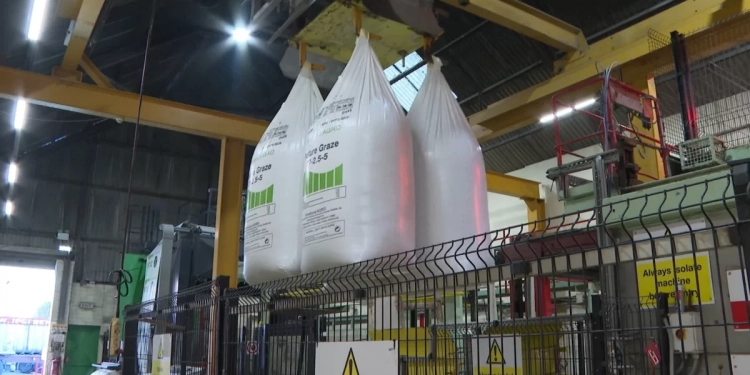The Ukraine crisis could have serious consequences for fertilizer prices. Affected are ammonium nitrate, phosphorus and potash. Export disruptions and European sanctions will significantly reduce supply.

In the previous week, fertilizer prices on the world market had fallen. A small Indian tender caused urea fertilizer prices to fall sharply. But now everything is in question again : The consequences of the armed conflict on the Black Sea are serious and are affecting many areas.
Crude oil and natural gas prices have already risen sharply. The implications for global supply of wheat, corn and barley are significant given the weight of both countries in these markets. They can be read directly from the rising grain prices . Marc Zribi, head of the cereals department at France’s agricultural agency FranceAgriMer, told the agricultural portal terre-net at a meeting that the short-term risks in the event of an open conflict are significant.
According to Zribi, Russia accounts for 13 percent of world trade in intermediate fertilizer products and 16 percent of trade in finished fertilizers. The consequences are even more serious when exporting ammonium nitrate . Brazil in particular could face massive problems, as the South American country buys almost 60% of Russian exports.

Russia accounts for a total of 40% of global ammonium nitrate exports. A significant part of it also goes to Europe. With 17% of the global trade volume, Russia is also an important supplier of phosphates and phosphorus fertilizers.
Global potash supply at risk – and high risk of failure
Finally, major risks for the supply of potash are also to be feared. Here Russia, like Belarus , accounts for around 20% of the global trade volume, says Zribi. Brazil, China , India, Indonesia and the United States, which together account for two-thirds of global potash imports, would be directly affected in the event of sanctions.
"All in all, the conflict could fuel a new upward spiral in fertilizer prices," said France Agirmer's grain division manager. A worsening of the crisis would also have an impact on logistics flows. In any case, there will probably be longer delivery times, detours in transport and sharply rising costs for sea freight and insurance.
In addition, there is likely to be new legal uncertainty in contracts, with the risk of non-payment due to “force majeure” in the event of war. An open conflict also leads to significant disruptions in international financial circuits. Ultimately, there is also a risk that the major importers will return to a completely different procurement policy and to securing their own supply of agricultural commodities, which is likely to put additional pressure on the markets.
Noticeable consequences for grain markets and food prices
The tensions are also likely to lead to a further increase in the prices for agricultural commodities , combined with a high risk for the food security of many countries due to price and availability reasons, explained Marc Zribi.
If the high risks of conflict concern the Azov Sea ports, which account for only 6% of the volume of agricultural products exported by Ukraine, 70% of the goods to be exported are transported by train to the Black Sea ports and are very high risks in case of war exposed. In the worst case scenario, the Russia of eastern Ukraine could deprive the entire country of up to 30% of barley and up to 40% of sunflower, wheat and maize production, the French expert believes.
Not only are both countries responsible for 30% of global wheat and barley exports , but Russia and Ukraine also supply nearly 80% of the global supply of sunflower oil. And a lot more.









